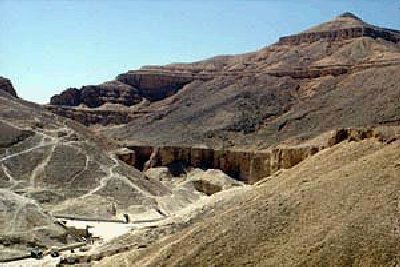
The "Valley of the Kings" is located on the West Bank of the Nile River, just across from the city Thebes, the capital of Egypt during the Middle and New Kingdoms. It was the favorite hiding place for the tombs of the Pharaohs and their royal courts during the 18th and 19th Dynasties. Notice that the valley was located beneath a mountain that looked very much like a pyramid.
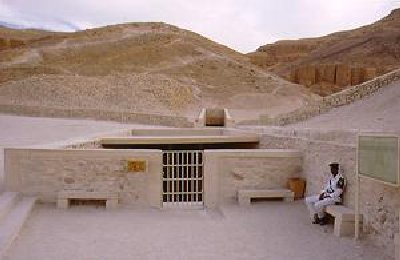
Shown here is the entrance of KV 62 - the famous tomb of Tutankhamun. It was discovered in 1922 by British archeologist Howard Carter who found it hidden beneath the rubble left after the building of tomb of Rameses VI. The tomb chamber remained "undisturbed" and contained the famous "Treasure of King Tut." The tomb was filled with possessions designed to accompany the young pharaoh into the afterlife and today they are considered as some of the greatest archeological treasures ever found.
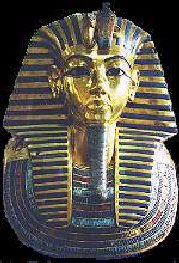
The mummy of the boy-king was found inside three coffins placed in four golden shrines. On his head was the Golden Death Mask which is considered as one of the most famous Egyptian artifacts ever discovered.
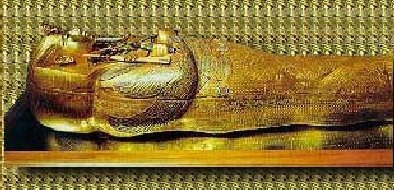
King Tutankhamun's mummy was located inside a fantastic solid 24k Gold "Mummiform" Coffin that weighted more than two thousand pounds..
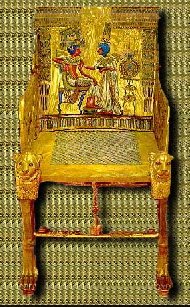
Another part of the treasure was the Golden Throne which had been made for this 18th Dynasty "god-king" who died suddenly before he reached his 19th birthday. He may even have been killed, because he apparently died from a blow to the back of his head.
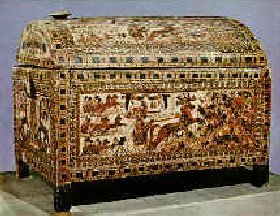
Among his possessions was this beautifully decorated wooden war chest. When King Tutankhamun died he was buried in a very small tomb with only four chambers. After his death his tomb was only visited once by tomb robbers and then its location was forgotten until Howard Carter discovered it again in 1922. The entrance had been completely covered over during the building of Rameses VI's tomb.
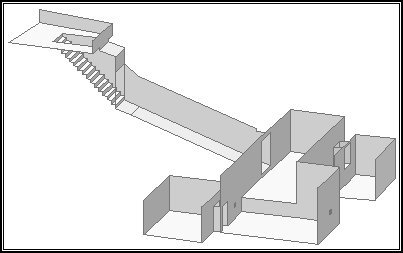
This diagram of KV-62 was drawn by the Theban Mapping Project whose work in the Valley of the Kings accidentally led in 1989 to the discovery of the Tomb of the sons of Rameses the Great located in KV 5.
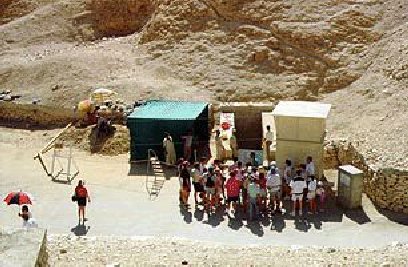
A crowd of tourists stand in front of KV 5. This tomb was long thought to be of little importance and its entrance had actually been covered over by rubble made by Howard Carter while looking for more important tombs. In 1989, American Archeologist Kent Weeks and his Theban Mapping Project began looking for KV 5's lost entrance so that they could map it. The entrance had been partly covered over by the road that allowed the tourist buses to enter the Valley of the Kings. A leaking sewer line had also been accidentally run into the entrance of the tomb. Because of this, when Ken Weeks first looked into the tomb, he wasn't able to answer in the same way as Howard Carter had when Lord Carnarvon had asked what Carter saw when he first looked into King Tut's tomb. It certainly wasn't "Wonderful Things" Kent saw and smelled. What Kent had seen, however, was what is now recognized as the greatest discovery since Howard Carter's original discovery of Tutankhamun's tomb.
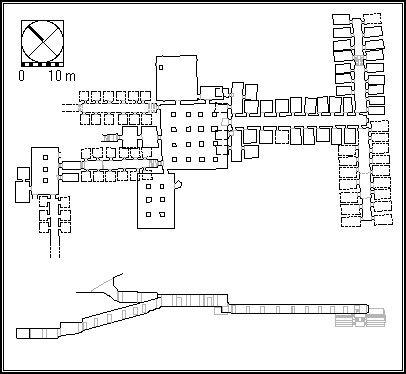
KV 5 turned out to be the burial place for 28 of the sons of Rameses the Great. It is completely unique in design and has over 200 rooms making it the largest tomb ever found in Egypt. It is ironic that KV 5 had been covered over with rubble made by Howard Carter, himself, in much the same manner as Tutankhamun's tomb had been before its great discovery.
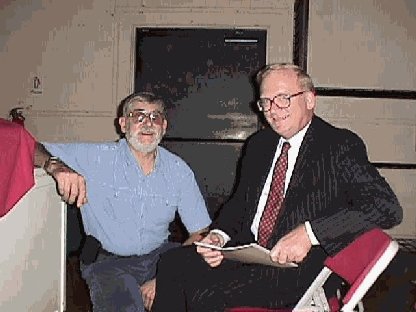
Archaeologist Kent Weeks poses with Pete Loeser at the San Jose Egyptian Museum before giving a talk on his rediscovery of the tomb. Kent is the author of the book, The Lost Tomb and his discovery promises to rank among the greatest in modern Egyptology.